Abstract
Four Corners hantavirus (FCV) is the tentative name of the suspected etiologic agent of the newly identified hantavirus-associated respiratory distress syndrome (HARDS). The identification in HARDS patients of serum immunoglobulin M and immunoglobulin G antibodies that cross-reacted with Hantaan, Seoul, and Puumala virus antigens first suggested that FCV is a hantavirus. Limited nucleotide sequence data from the FCV glycoprotein-2 (G2) confirmed that FCV is a hantavirus and showed that it is most closely related to Prospect Hill and Puumala viruses. We have molecularly cloned approximately 95% of the sequences of the M and S segments of the FCV genome encoding the envelope glycoproteins and nucleocapsid protein N from the lungs of a patient with HARDS. The nucleotide sequence has been determined for 2,632 bases. The nucleotide sequence data show that FCV is a new member of the Puumala virus and Prospect Hill virus division of the hantavirus genus. Phylogenetic tree analyses indicate that the M and S segments have evolved in parallel. Therefore, the novel pathogenic activity of FCV is not likely to be the result of recent reassortment of segments from less pathogenic viruses.
Full text
PDF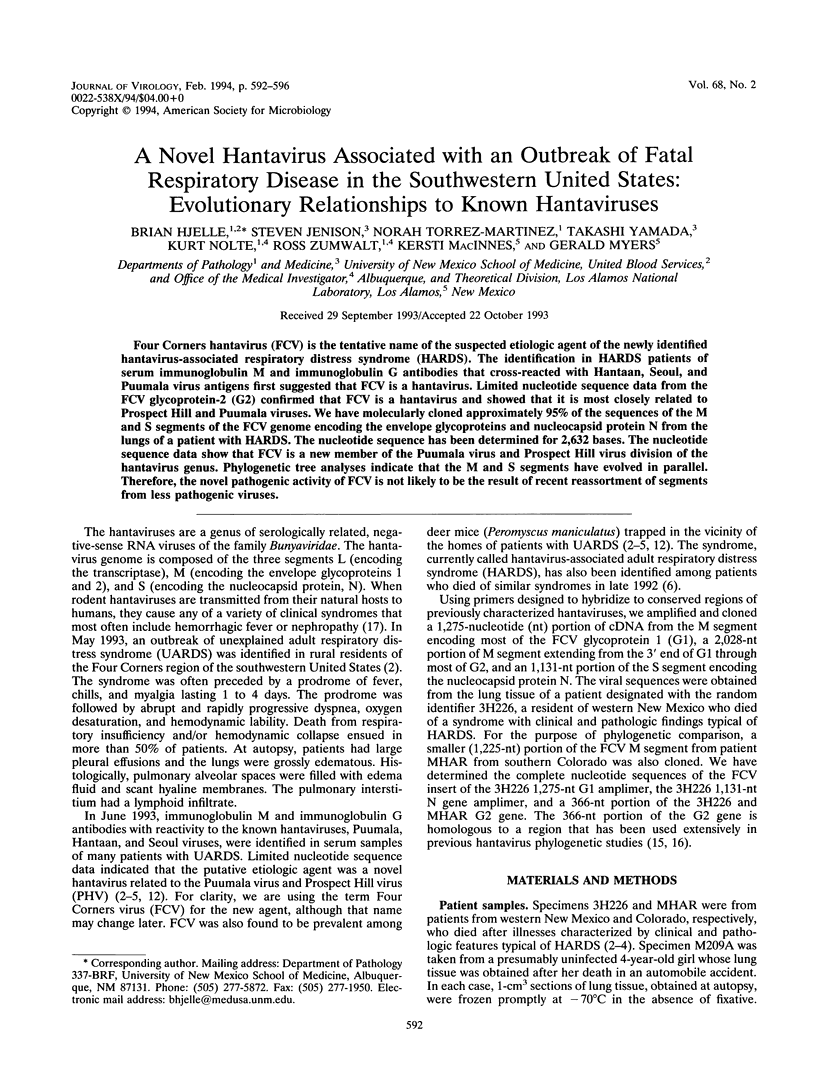
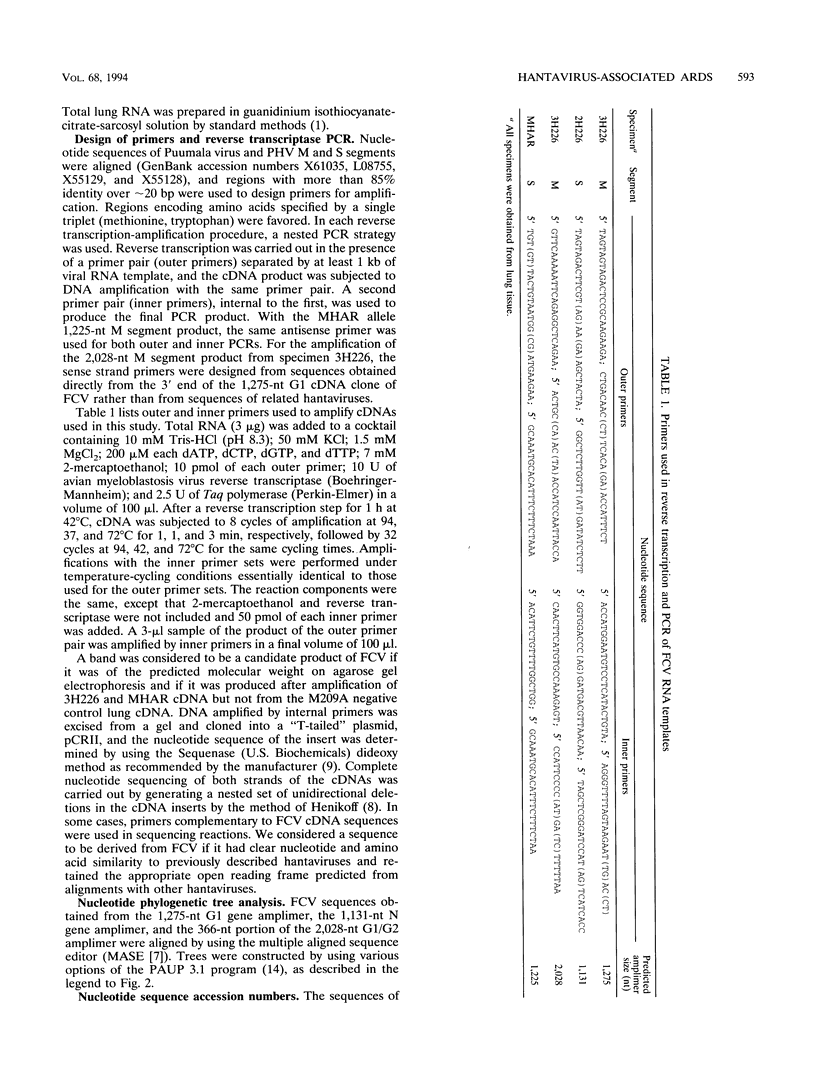
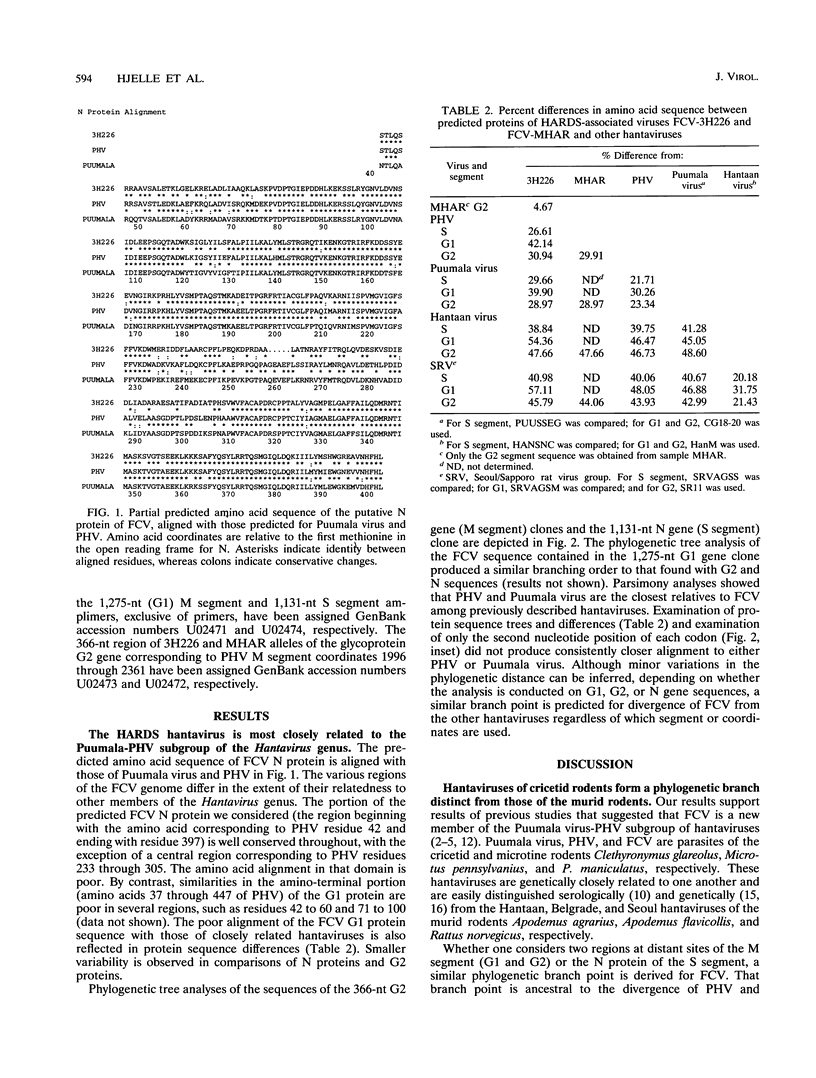
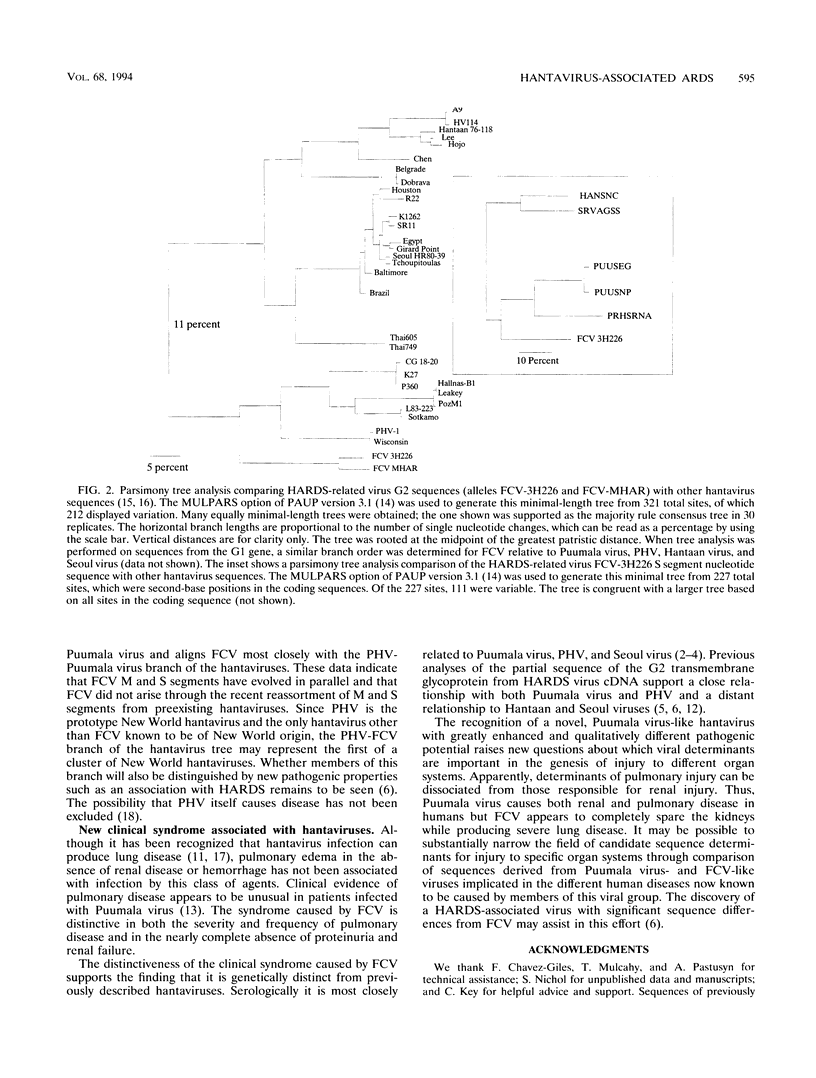
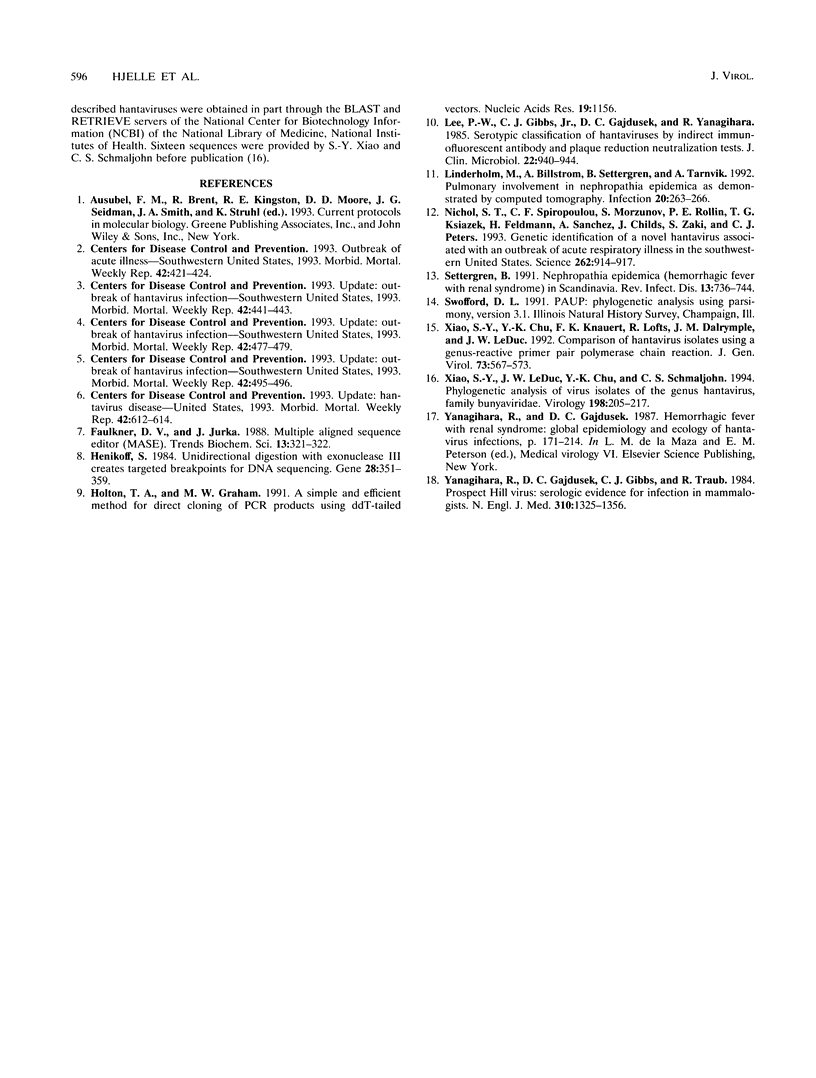
Selected References
These references are in PubMed. This may not be the complete list of references from this article.
- Faulkner D. V., Jurka J. Multiple aligned sequence editor (MASE). Trends Biochem Sci. 1988 Aug;13(8):321–322. doi: 10.1016/0968-0004(88)90129-6. [DOI] [PubMed] [Google Scholar]
- Henikoff S. Unidirectional digestion with exonuclease III creates targeted breakpoints for DNA sequencing. Gene. 1984 Jun;28(3):351–359. doi: 10.1016/0378-1119(84)90153-7. [DOI] [PubMed] [Google Scholar]
- Holton T. A., Graham M. W. A simple and efficient method for direct cloning of PCR products using ddT-tailed vectors. Nucleic Acids Res. 1991 Mar 11;19(5):1156–1156. doi: 10.1093/nar/19.5.1156. [DOI] [PMC free article] [PubMed] [Google Scholar]
- Lee P. W., Gibbs C. J., Jr, Gajdusek D. C., Yanagihara R. Serotypic classification of hantaviruses by indirect immunofluorescent antibody and plaque reduction neutralization tests. J Clin Microbiol. 1985 Dec;22(6):940–944. doi: 10.1128/jcm.22.6.940-944.1985. [DOI] [PMC free article] [PubMed] [Google Scholar]
- Linderholm M., Billström A., Settergren B., Tärnvik A. Pulmonary involvement in nephropathia epidemica as demonstrated by computed tomography. Infection. 1992 Sep-Oct;20(5):263–266. doi: 10.1007/BF01710791. [DOI] [PubMed] [Google Scholar]
- Nichol S. T., Spiropoulou C. F., Morzunov S., Rollin P. E., Ksiazek T. G., Feldmann H., Sanchez A., Childs J., Zaki S., Peters C. J. Genetic identification of a hantavirus associated with an outbreak of acute respiratory illness. Science. 1993 Nov 5;262(5135):914–917. doi: 10.1126/science.8235615. [DOI] [PubMed] [Google Scholar]
- Settergren B. Nephropathia epidemica (hemorrhagic fever with renal syndrome) in Scandinavia. Rev Infect Dis. 1991 Jul-Aug;13(4):736–744. doi: 10.1093/clinids/13.4.736. [DOI] [PubMed] [Google Scholar]
- Xiao S. Y., Chu Y. K., Knauert F. K., Lofts R., Dalrymple J. M., LeDuc J. W. Comparison of hantavirus isolates using a genus-reactive primer pair polymerase chain reaction. J Gen Virol. 1992 Mar;73(Pt 3):567–573. doi: 10.1099/0022-1317-73-3-567. [DOI] [PubMed] [Google Scholar]
- Xiao S. Y., Leduc J. W., Chu Y. K., Schmaljohn C. S. Phylogenetic analyses of virus isolates in the genus Hantavirus, family Bunyaviridae. Virology. 1994 Jan;198(1):205–217. doi: 10.1006/viro.1994.1023. [DOI] [PubMed] [Google Scholar]
- Yanagihara R., Gajdusek D. C., Gibbs C. J., Jr, Traub R. Prospect Hill virus: serologic evidence for infection in mammologists. N Engl J Med. 1984 May 17;310(20):1325–1326. doi: 10.1056/NEJM198405173102013. [DOI] [PubMed] [Google Scholar]


